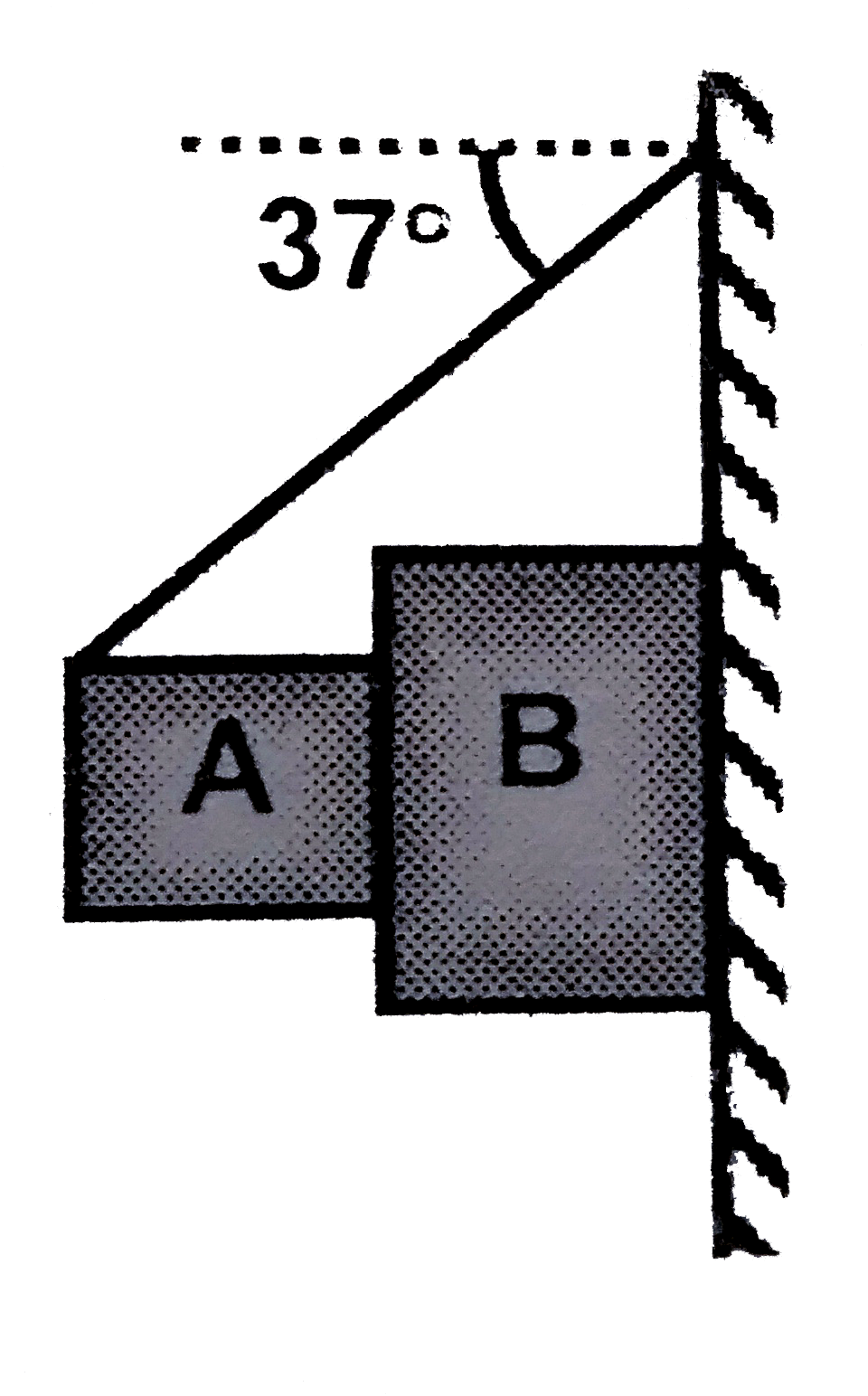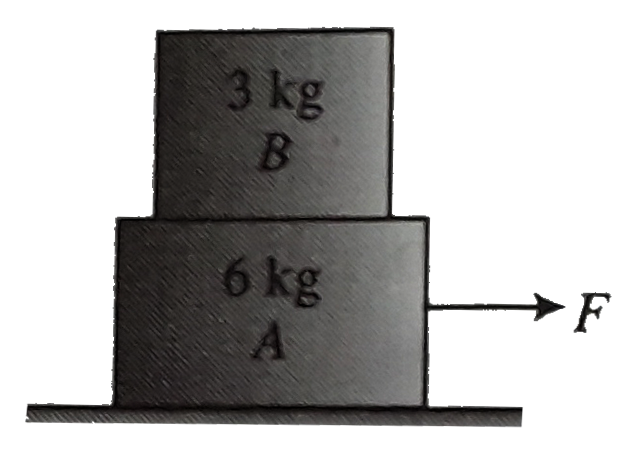The maximum value of mass of block C so that neither A nor B moves is (given that mass of A is 100kg and the of B 140kg. Pulleys are smooth and friction coefficient between A and B and horizontal surface μ=0.3)(Takingg=10ms−2)

210kg
190kg
185kg
162kg
The correct Answer is:d
Maximum friction that can be abtained between A and B is f1=μmAg=(0.3)(100)=300N and maximum friction between B and ground is
f2=μ(mA+mB)g=(0.3)(100+140)(10)=720N
Drawing free body of A,B and C in limiting case

Equilibrium of A given
T1=f1=300N...(i)
Equilibrium of B given
2T1=f1+f2=T2
or T2=2(300)+300+720=1620N...(ii)
and equilibrium of C gives mcg=T2
or 10mc=1620 or mc=162kg
Topper's Solved these Questions
- BOOK - CENGAGE PHYSICS ENGLISHCHAPTER - NEWTON'S LAWS OF MOTION 2EXERCISE - Multiple Correct2videos
NEWTON'S LAWS OF MOTION 2
- BOOK - CENGAGE PHYSICS ENGLISHCHAPTER - NEWTON'S LAWS OF MOTION 2EXERCISE - Linked Comprehension52videos
NEWTON'S LAWS OF MOTION 2
- BOOK - CENGAGE PHYSICS ENGLISHCHAPTER - NEWTON'S LAWS OF MOTION 2EXERCISE - Subjective21videos
NEWTON'S LAWS OF MOTION 2
- BOOK - CENGAGE PHYSICS ENGLISHCHAPTER - NEWTON'S LAWS OF MOTION 1EXERCISE - Integer5videos
NEWTON'S LAWS OF MOTION 1
- BOOK - CENGAGE PHYSICS ENGLISHCHAPTER - PROPERTIES OF SOLIDS AND FLUIDSEXERCISE - INTEGER_TYPE2videos
PROPERTIES OF SOLIDS AND FLUIDS
Similar Questions
Find the value of friction forces between the blocks A and B and between B and ground. ( Take , g=10ms−2)
 View Solution
View SolutionDetermine the acceleration of the 5kg block A . Neglect the mass of the pulley and cords . The block B has a mass of 10kg, The coefficient of kinetic friction between block B and the surface is μk=0.1 (take g=10m/s2)
 View Solution
View SolutionA block A of mass 2 kg rests on a horizontal surface. Another block B of mass 1 kg moving at a speed of m/s when at a distance of 16 cm from A. collides elastically with A. The coefficeint of friction between the horizontal surface and earth of the blocks is 0.2. Then (g=10m/s2)
View SolutionTwo block A and B of mass 50kg and 300kg respectively are placed as shown in figure. Coefficient of friction between all surface is 12
Then (take g=10m/s)
 View Solution
View SolutionA block of mass 8 kg is sliding on a surface inclined at an angle of 45∘ with the horizontal . Calculate the acceleration of the block . The coefficient of friction between the block and surface is 0⋅6 ( Take g = 10m/s2)
View SolutionMeasles of A and B 10 kg and 5 kg respectively.y A is on smooth surface coefficient of friction between A and B is 0.4 if F=75N friction between the block is __ N.
 View Solution
View SolutionThere are two block as shown in the figure of masses 1kg and 4kg. Friction coefficient between any two surfaces are 0.2 then find maximum value of horizontal force F so that both blocks moves together.
_2019_CBT6_E01_036_Q01.png) View Solution
View SolutionA force of 100 N is applied horizontally on a block of mass 10 kg placed on a horizontal floor of coefficient of friction 0.5, The acceleration of the block is (takeg=10ms−2)
View SolutionA block of mass 8 kg is sliding on a surface inclined at an angle of 45∘ with the horizontal. Calculate the acceleration of the block. The coefficient of friction between the block and surface is 0.6. (Take g=10m/s2)
View SolutionTwo block A and B of masses 6kg and 3kg rest on a smooth horizontal surface as shown in figure If coefficient of friction between A and Bb is 0.4 the maximum horizontal force which can make them move without separation is
 View Solution
View Solution
